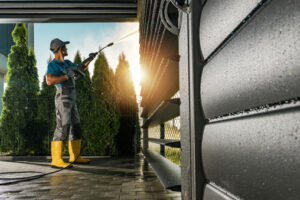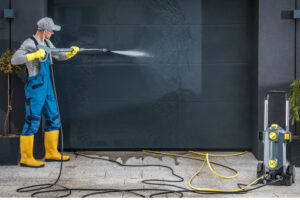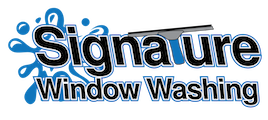Are you planning on painting your home? Pressure washing is a great way to prepare the walls for a fresh coat of paint. But how long do you need to wait after pressure washing before painting?
If you’re wondering when the right time is to start painting, you’ve come to the right place. This article will explain exactly how long after pressure washing you can start painting. We’ll also discuss what happens if you paint too soon and provide tips and tricks on how to get the best results possible.
Overview Of Pressure Washing
 Pressure washing is a popular cleaning service used to get rid of dirt, grime, and other debris from the exterior of homes and businesses. Pressure washing is a great way to improve the appearance of any property, as it can remove years of buildup and make your home or business look brand new. Pressure washing is also an important part of preparing a surface for painting or another type of renovation. Before you start painting, however, it’s important to understand how long you should wait after pressure washing before you begin painting.
Pressure washing is a popular cleaning service used to get rid of dirt, grime, and other debris from the exterior of homes and businesses. Pressure washing is a great way to improve the appearance of any property, as it can remove years of buildup and make your home or business look brand new. Pressure washing is also an important part of preparing a surface for painting or another type of renovation. Before you start painting, however, it’s important to understand how long you should wait after pressure washing before you begin painting.
The amount of time between pressure washing and painting will depend on the material being painted and the weather conditions. In many cases, it’s best to wait at least 24 hours before applying paint over a freshly pressure washed surface. This gives the material enough time to dry completely so that the paint adheres properly. If you’re painting in direct sunlight or temperatures below 40 degrees Fahrenheit, then you may need to wait longer than 24 hours for proper adhesion. It’s also important to consider if there were any harsh chemicals or detergents used during the pressure washing process; these can leave behind residue that could interfere with proper adhesion if not given time to evaporate. For these reasons, it’s always best to check with a professional house cleaning service before beginning your project.
No matter what kind of material you’re working with or what type of surface needs to be cleaned before painting, it’s essential that you give it sufficient time between pressure washing and painting so that your project turns out successful and looks its best.
Advantages Of Pressure Washing
Pressure washing offers a number of advantages for homeowners and businesses. One of the major benefits is that it can help to extend the life of the surfaces being cleaned. Regular pressure washing can help to remove dirt, grime, mildew and other debris that can cause damage over time. Additionally, pressure washing is an effective way to prepare a surface for painting or other types of renovations, and it can even be used to restore an old or weathered surface.
Since pressure washing only uses water under high pressure as opposed to harsh chemicals, it’s also an eco-friendly option. This makes it a great choice for anyone who wants an effective cleaning solution without causing harm to the environment. Pressure washing is also relatively quick and simple, so it’s often a more cost-effective cleaning solution than traditional methods.
Overall, pressure washing is a safe, efficient way to clean and prepare surfaces for painting or renovation projects. It’s important to allow enough time between pressure washing and painting in order for the surface to dry completely before you begin your project. Doing so will ensure that the paint adheres properly and looks its best when finished.
Preparation For Painting After Pressure Washing
Once you have finished pressure washing, it is important to adequately prepare the surface for painting. Before applying paint, make sure that the surface is completely dry. If a wet surface is painted, the paint job will not adhere properly and may look uneven or streaky when finished. Additionally, any moisture left on the surface can cause the paint to bubble or blister over time.
To ensure that the surface is completely dry before painting, allow at least 24 hours after pressure washing before beginning your project. If you’re in a hurry, you can speed up this process by using a fan or hairdryer set on low heat to help evaporate any moisture trapped in cracks or crevices. Be sure to check for dampness with your hand prior to painting; if it feels cool or damp to the touch, it’s still too wet to begin painting.
It’s also helpful to inspect the surface for any remaining debris after pressure washing and clean it off with a brush if necessary. Doing so will help create an even and uniform finish when applying primer and paint later on. Taking these extra steps prior to painting will help ensure that your project looks its best when finished.
Supplies Needed For Painting After Pressure Washing
Once you are confident that the surface is completely dry, it is time to gather the supplies needed for painting. You will need a good quality primer, paint, brushes, rollers and trays or buckets for mixing. It is important to choose a paint and primer that are designed specifically for exterior surfaces; this will help ensure that your finished project looks great and lasts for years to come.
It’s also a good idea to wear protective clothing such as gloves, long sleeves and pants when painting—especially if you’re working with oil-based paints. This can help protect your skin from any harmful chemicals in the paint. Additionally, be sure to open windows in your workspace to allow fresh air in and use a mask if necessary. Following these simple steps can help keep you safe while completing your project.
Safety Considerations Before Starting Project
Before beginning your project, it’s important to take a few safety considerations into account. Make sure the area you are painting is well-ventilated and wear protective gear such as goggles, gloves, and long-sleeved clothing. Additionally, use drop cloths or tarps to protect any surfaces that don’t need to be painted. If you’re using oil-based paint, it’s also important to use a mask or respirator to protect yourself from any fumes.
Finally, never mix different types of paints together and always read all labels on paint cans before starting your project. Following these simple steps can help ensure that you have a safe and successful experience while painting after pressure washing.
Process Of Pressure Washing
 Now that the safety precautions have been taken, it’s time to move on to the process of pressure washing. Pressure washing is a great way to prepare a surface for painting because it can remove dirt and debris from hard-to-reach areas, as well as strip away old paint and other residues.
Now that the safety precautions have been taken, it’s time to move on to the process of pressure washing. Pressure washing is a great way to prepare a surface for painting because it can remove dirt and debris from hard-to-reach areas, as well as strip away old paint and other residues.
When pressure washing, be sure to start at the top of the surface and work your way down in order to avoid any water dripping down. Additionally, use a fan pattern when spraying so that you can get an even wash. Once you’ve finished pressure washing, let the surface dry for at least 24 hours before beginning to paint. This will ensure that all of the moisture has evaporated and that the area is completely dry before starting your project.
Steps To Take After Pressure Washing
After pressure washing, it’s important to take the necessary steps to ensure that the surface is ready for painting. The first step to take is to inspect the area for any residue or imperfections. This can be done by running your hand over the area or using a flashlight to check for spots that may have been missed. If any dirt, grime, or old paint is still present, it should be removed before beginning the painting process.
Once you’re satisfied with the cleanliness of the surface, you’ll need to apply a primer prior to painting. Primer helps create a better bond between the wall and paint and will also help protect against moisture damage in the future. Be sure to use an oil-based primer when working with wood surfaces and a latex-based primer when working with masonry walls. After applying two coats of primer, you can move on to painting your desired color.
With all these steps taken care of, you can rest assured that your painted surface will last longer and look better than ever before!
Drying Time Required Before Painting
Once you’ve completed the prepping steps, it’s time to move on to the drying process. Depending on the climate and humidity levels, it can take anywhere from 24 to 48 hours for the surface to dry completely. During this time, it’s important that you keep the area free of any moisture or dampness. To ensure that there is no water left behind, you can use a fan to circulate air or set up a dehumidifier in the room.
Once your surface has been given enough time to dry, you can begin painting with confidence. Make sure to use a quality paint that is designed for outdoor surfaces and follow all instructions provided by the manufacturer. With proper care and maintenance, your painted surface should look beautiful and last for years!
Choosing The Right Paint For The Job
Now that you know how long it takes for pressure washing to dry, it is important to choose the right paint for the job. Different surfaces such as wood, metal, and concrete require different types of paint to ensure lasting results. Additionally, you’ll need to consider factors like climate conditions and the type of finish you’re looking for.
When selecting a paint, opt for one that is designed for outdoor use and has been approved for use on pressure-washed surfaces. Consider using a primer coat first to provide an extra layer of protection against the elements and make sure to read all instructions before applying any product. With the right supplies and preparation, your painted surface should look great and last for years!
Cleaning Up After The Job Is Done
After the paint has been applied, it’s time to clean up. To ensure that everything goes smoothly, make sure to take the necessary precautions and clean up properly. Start by using a damp cloth or sponge to wipe away any residue from the paint cans and brushes. Be sure to dispose of used paint materials according to local regulations and don’t forget to put them in separate containers for safe disposal.
When you’re finished cleaning up, it’s important to allow your painted surfaces plenty of time to cure before exposing them to moisture or heavy traffic. Depending on the type of paint used, this can take anywhere from several hours to several days. Once the curing process is complete, your newly-painted surface is ready for use!
Protecting Your Surfaces From Future Damage
 Having taken the time to properly clean and paint your surfaces, it’s important to take steps to protect them from future damage. One of the most effective ways to do this is by pressure washing. Pressure washing utilizes a high-pressure stream of water to remove dirt, debris, and mildew from surfaces. This process can help ensure that your newly-painted surfaces remain in pristine condition for years to come.
Having taken the time to properly clean and paint your surfaces, it’s important to take steps to protect them from future damage. One of the most effective ways to do this is by pressure washing. Pressure washing utilizes a high-pressure stream of water to remove dirt, debris, and mildew from surfaces. This process can help ensure that your newly-painted surfaces remain in pristine condition for years to come.
Once you’ve pressure washed any given surface, it’s best to wait at least 24 hours before painting over it. This allows the surface enough time to dry and prevents the paint from peeling or bubbling up due to moisture buildup. Taking these precautions will help ensure that your freshly painted surfaces stay looking great for many years!
Tips And Tricks For A Successful Finish
Having taken the necessary steps to protect your surfaces with pressure washing and drying, it’s time to complete the job with a successful finish. To do this, there are a few tips and tricks you can keep in mind.
Firstly, it’s important to use a high-quality paint. This will ensure that your surfaces are properly protected from the elements and that the color remains vibrant for years to come. Additionally, be sure to use multiple coats of paint for best results. This will help create an even finish that won’t easily chip or fade over time.
When it comes time to apply the paint, make sure you take your time and use smooth strokes. You should also avoid painting in direct sunlight as this could cause the paint to dry too quickly and create an uneven finish. With these tips in mind, you can rest assured that your newly painted surfaces will look great for years!
Common Misconceptions About Pressure Washing And Painting
One of the most common misconceptions about pressure washing and painting is that you can start painting immediately after pressure washing. However, this isn’t always the case. Depending on the material being painted and temperature, it may take several hours before painting can begin.
It’s important to wait until the surface has completely dried before applying any paint. This will ensure that the paint bonds properly with the surface and won’t peel or crack over time. Additionally, it’s important to check for any remaining dirt or debris after pressure washing so it doesn’t show up in your finished product.
By following these steps and waiting until your surfaces are dry before painting, you can ensure that your paint job looks great and lasts for years to come!
Benefits Of Professional Assistance With Painting After Pressure Washing
There are many benefits to enlisting the help of a professional when it comes to painting after pressure washing. Professionals have the experience and necessary tools to get the job done right and quickly. Furthermore, they can identify any potential problems that could arise during the process, such as moisture or debris buildup, and take steps to address them before they become an issue. Additionally, professionals know how long after pressure washing is required for certain materials before painting can begin and can ensure that you don’t start too soon.
By hiring a professional for your painting needs after pressure washing, you can rest assured that your job will be completed quickly and correctly with minimal hassle on your part. Furthermore, their expertise will ensure that you get a quality finish that looks great and lasts for years to come!
Alternatives To Paint For Protection And Enhancement
 If you’re looking for an alternative to painting after pressure washing, there are several options available. For example, applying a sealant is another great way to protect and enhance the surface of your home or property. Sealants create a protective layer that helps repel dirt, dust, and other debris while helping to preserve the color of the surface. Furthermore, they can also be used as a decorative element, adding texture and depth to any outdoor space.
If you’re looking for an alternative to painting after pressure washing, there are several options available. For example, applying a sealant is another great way to protect and enhance the surface of your home or property. Sealants create a protective layer that helps repel dirt, dust, and other debris while helping to preserve the color of the surface. Furthermore, they can also be used as a decorative element, adding texture and depth to any outdoor space.
Staining is also an option for protecting and enhancing after pressure washing. Staining adds color and texture to the surface in addition to providing protection from UV rays and moisture damage. It’s important to note that staining requires more maintenance than painting since it needs to be reapplied every few years for optimal performance. However, when done properly, it can add character and life to any outdoor area!
Conclusion
In conclusion, pressure washing is an effective method of preparing a surface for painting. It removes debris, dirt, and other contaminants that can prevent paint from adhering properly. When done correctly, painting can be done right away after pressure washing is finished. However, it’s important to make sure the surface is completely dry before painting and that all necessary supplies and safety precautions are taken. Proper preparation will help ensure a successful finish and avoid common misconceptions about pressure washing and painting.
Professional assistance can be beneficial when taking on a project like this since they have the necessary skills, experience, knowledge, and equipment to complete the job quickly and efficiently. Alternatives to paint are also available for additional protection or enhancement of the surface being painted.
Overall, pressure washing is an important part of any painting project. Following the suggested steps will help ensure a successful outcome that lasts for years to come. Taking time to prepare properly before beginning will save time and money in the long run by avoiding costly mistakes or re-dos down the road.

Recent Comments